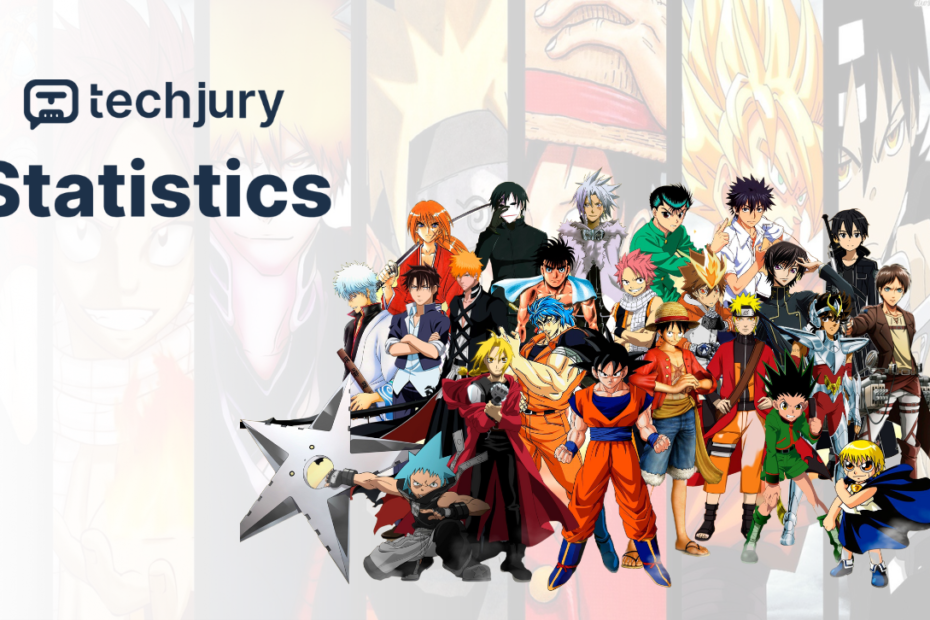Understanding the Global Anime Ecosystem: Beyond Entertainment, A Cultural and Economic Marvel
When you first hear the term "anime," what comes to mind? Perhaps vibrant characters, intricate storylines, or those distinctively expressive animation styles. But as a data analyst and technology specialist, I see something far more fascinating: a complex, globally interconnected ecosystem that represents one of the most dynamic entertainment markets in the world.
The Origins: From Niche Cultural Export to Global Powerhouse
The journey of anime from a localized Japanese art form to a global cultural phenomenon is nothing short of remarkable. What began as a modest animation style in early 20th-century Japan has transformed into a multi-billion dollar industry that transcends geographical and cultural boundaries.
Historically, anime emerged in the early 1900s, with Osamu Tezuka often credited as the "godfather" who revolutionized the medium in the 1960s. His work, particularly "Astro Boy," established many of the visual and narrative techniques that would define anime for generations. But the real global breakthrough came in the late 1980s and early 1990s, when series like "Dragon Ball," "Sailor Moon," and "Akira" started capturing international imagination.
The Economic Landscape: Numbers That Tell a Story
Let‘s dive into the numbers that illuminate anime‘s extraordinary economic trajectory. In 2022, the global anime market was valued at approximately [USD 25.62 billion], with projections suggesting it will reach [USD 52.99 billion] by 2032. This represents a compound annual growth rate of 7.5% – a figure that would make most industries envious.
What makes these numbers truly fascinating is not just their magnitude, but their distribution. For the first time in history, in 2020, the overseas anime market surpassed Japanese domestic sales. North America and China emerged as primary drivers, accounting for roughly 51% of total market revenue.
The Franchise Phenomenon
Consider the Pokémon franchise – a testament to anime‘s economic potential. Since its inception in 1996, Pokémon has generated approximately [USD 110 billion], making it not just the highest-grossing anime franchise, but the highest-grossing media franchise globally. To put this into perspective, that‘s more than the GDP of many small countries.
Demographic Dynamics: Who‘s Watching and Why?
The anime audience is far from monolithic. Contrary to stereotypical perceptions, anime appeals to a diverse, global demographic. The average anime fan is 24.42 years old, with engagement patterns varying dramatically across regions.
In the United States, for instance, 42% of millennials identify as anime fans, compared to just 12% of baby boomers. Gender distribution shows interesting variations: globally, the viewership is split 54% male to 46% female, but this ratio fluctuates significantly by country. In Vietnam, Russia, and France, female viewers actually outnumber males.
Technological Transformation: How Digital Platforms Revolutionized Consumption
The rise of streaming platforms has been pivotal in anime‘s global expansion. Netflix reported that over half of its 222 million global subscribers watched anime in 2021. Crunchyroll, a specialized anime streaming service, boasts 120 million registered users.
Machine learning and recommendation algorithms have played a crucial role. By analyzing viewing patterns, platforms can now suggest anime with unprecedented accuracy, creating personalized viewing experiences that keep audiences engaged.
Production Challenges: The Human Side of Animation
Despite its economic success, the anime industry faces significant challenges. In 2021, 39.8% of anime production companies reported financial losses. The industry is notorious for grueling working conditions, with animators often working long hours for modest compensation.
Technological advancements are gradually addressing these challenges. AI-assisted animation tools are reducing production time and complexity, potentially offering more sustainable working models for creators.
Regional Variations: A Global Tapestry of Consumption
Anime consumption isn‘t uniform across the globe. While the United States leads in demand expressions per capita, countries like the Philippines, Brazil, and France show remarkably high engagement levels.
In Japan itself, contrary to popular belief, only 33% of the population actively watches anime or reads manga. Among younger generations (born between 1995-2000), however, 66% watch anime daily, indicating a generational shift in entertainment preferences.
Investment and Collector‘s Perspective
For those viewing anime through an investment lens, the market offers intriguing opportunities. Rare manga volumes, limited edition collectibles, and vintage animation cels have seen significant appreciation.
Collectors and investors are increasingly using data analytics to make informed decisions. Machine learning models now help predict the potential value appreciation of specific anime franchises and collectible items.
The Future: Predictive Insights and Emerging Trends
Looking forward, several trends are poised to shape anime‘s trajectory:
- Increased global production collaborations
- More diverse storytelling and representation
- Enhanced virtual and augmented reality experiences
- AI-assisted animation techniques
- Deeper cross-cultural narrative exchanges
Conclusion: More Than Just Animation
Anime represents far more than entertainment. It‘s a complex, dynamic ecosystem that reflects technological innovation, cultural exchange, and global storytelling evolution.
As data continues to reveal deeper insights into this fascinating world, one thing becomes clear: anime is not just a genre, but a global language of creativity, emotion, and human connection.
Key Takeaways
- Anime is a [USD 25.62 billion] global industry with exponential growth potential
- Demographic engagement varies dramatically across regions
- Technological innovations are reshaping production and consumption
- The market offers unique investment and collector opportunities
